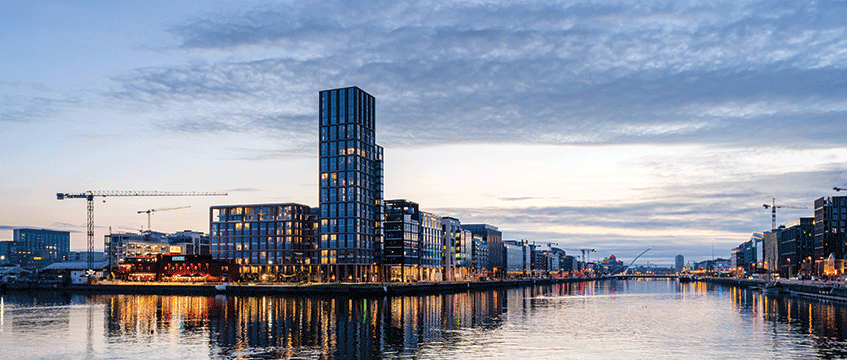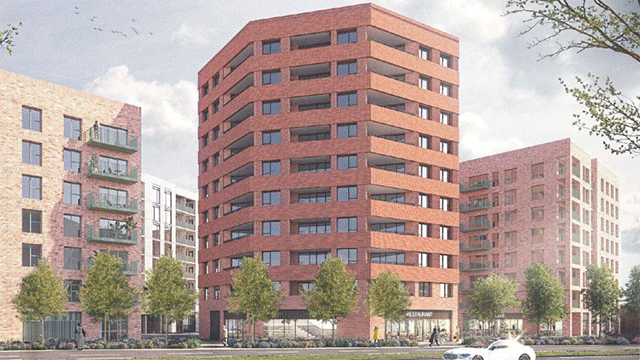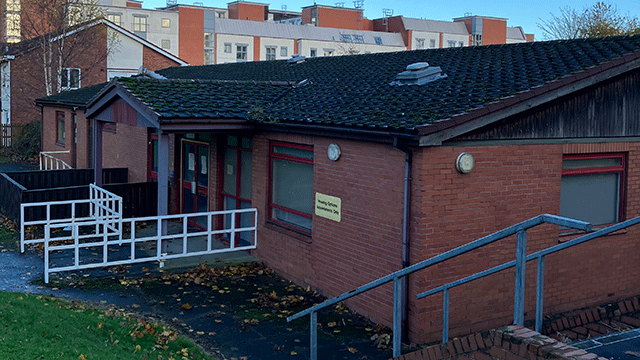Dublin is a warm and welcoming city renowned for its historic core and character, but it is also a city that has been battling urban sprawl. Known for its high density in the city centre and growing population, pressure has been put on it to focus on the densification of urban centres to ensure the optimal and sustainable use of land.
Ireland, and Dublin in particular, is attracting a high volume of institutional interest. In 2019, a record €7bn (£6bn) was invested there – twice that of the year before. It is also fast becoming a haven for tech workers – the sector accounted for 70% of take-up in Dublin in 2020, according to Savills – so the city is having to balance a growing demand for space with the desire to protect both its character and existing population.
That conundrum has led to debate around whether the city should go up or go out. But is there another way to deliver more homes at affordable prices in the city and create the lifestyle choices that the new generation of workers in the city are looking for?
Height or density?
A battle has been raging in Dublin’s docklands over height. Council plans to add more scale in North Lotts and the Grand Canal district (pictured), are not ambitious enough, says the An Bord Pleanála, an independent body that decides on appeals from planning decisions made by local authorities. Others claim they are too much and that too many towers will take away from character of the city.
Savills Ireland head of planning Raymond Tutty says the rhetoric over the height of buildings in the city has turned from target to cap.
“When I moved back from working in London for 11 years, I was aware that Dublin was not a high-rise city but I was surprised when I was trying to take buildings through the planning system, commercial buildings close to public transport interchanges, that we were being capped at six or seven storeys,” says Tutty.
“Everyone is trying to achieve sustainable development and reduce sprawl, but it is very much up in the air at the moment in Dublin about how you achieve that,” he adds.
“It’s about height but in the right locations,” says Greystar Ireland managing director Claire Solon. “To my mind, areas like the docklands or large sites where there aren’t existing residents or dwellings or impacts on existing dwellings and where it’s close to public transport, seem to be kind of an obvious choice.”
Future of Dublin speakers
- Raymond Tutty, head of planning, Savills
- Claire Solon, managing director, Greystar Ireland
- Sheila O’ Donnell, founding director, O’Donnell+Tuomey
Solon questions whether there should be targets or caps on building heights at all. She says it makes sense to build something feasibly, where the use is clear and where and it fits with the local context and that should be the determinant for how high it could or should go.
“At the end of the day, it’s not necessarily about height being the solution, it’s about density,” she says. “You don’t necessarily need to build tall to build densely.”
Architect Sheila O’Donnell, founder of O’Donnell+Tuomey, agrees. She says that if the focus is on density and creating neighbourhoods, the character of the city could be intensified.
She wants to see the city, planners and developers work on the inner and traditional suburbs such as Rathmines or Dundrum and bring life and community back to them.
“It makes sense to develop around them, rather than go further out,” she says.
Repurpose and revitalise
Focusing on what Dublin already has is a passion for Solon, who wants to see much of the empty space in the city centre brought back to life.
“I think it’s about supporting and growing what’s already there and not trying to remake something. It’s really about making sure that it’s going to be adding to that character, rather than taking away from it,” says Solon. “We have so many buildings with underutilised or unused space on the upper floors. We have talks and discussions on new build density and scale and integrating into communities, yet you walk around the city and you see how many lights are on in the upper floors of these buildings in the evening time – there’s very few.”
Solon says that just a fifth of the upper floors along Grafton Street and Henry Street are currently utilised and that is predominantly for storage. She is keen to see these spaces handed over to residential use.
“These are buildings right in the city centre. Next to public transport, next to where people are working, next to parks and there’s no car-based travel,” says Solon. “It’s exactly where people want to live and work. And yet these buildings are just not being used.”
However, there are many obstacles that need to be overcome when transforming Georgian uppers into homes that are fit for purpose. Fire regulations and disabled access can make the transformation too costly to be anything more than a pet project, says Solon. But perhaps, with a littler collaboration and focus from the whole built environment community, life could be brought back to these forgotten spaces.
“There needs to be some sort of a solution reached because there’s thousands of units that could be accommodated in existing buildings, really sustainably and reused in the built environment correctly,” she says.
“I think it probably needs to be done in association with city council and perhaps with researchers to actually think about how to deal with that very real problem,” adds O’Donnell. “It should be absolutely top of everyone’s agenda in housing the population of Ireland in a more sustainable way.”
For Savills’ Tutty, the ongoing discussions around how to balance refurbishment and bringing protected structures back into use with new development are encouraging for the future of Dublin. The publication of the new planning policy framework will see greater emphasis on brownfield development and there is a desire to create real mixed-use communities across the city.
For him the key is focus.
“There are plenty of cities in the world that don’t have the investor appetite that Dublin has,” he says. “We’ve just got to be able to funnel that growth and in the right direction.”

To send feedback, e-mail samantha.mcclary@egi.co.uk or tweet @samanthamcclary or @estatesgazette











